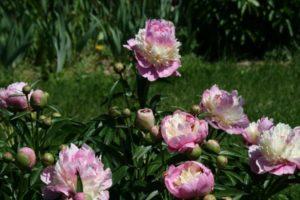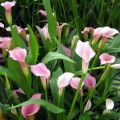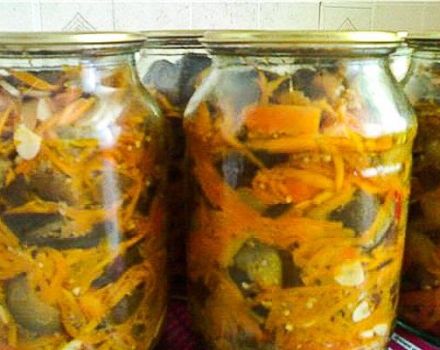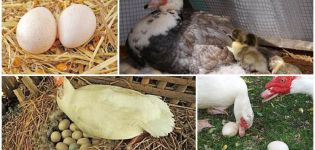Description of 18 popular varieties of milk-flowered peony, planting and care
Plants are popular in gardens, parks, city flower beds. The existing variety of varieties of herbaceous milky-flowered peony allows gardeners to choose, based on the timing of flowering, terry and color options. Bushes with openwork foliage and flowers, with a color from white to dark burgundy, have a pleasant aroma and bloom until late autumn. And large flower caps are good on the bush and in the cut. The varieties are selected for every taste.
Description and features
Perennials have large and fleshy roots, large leaves with a glossy surface and a variety of colors. The inflorescences are up to 21 centimeters in diameter and have a fragrant aroma.
Openwork dissected foliage is formed on each bush.
Popular varieties
The culture is quite popular and unpretentious. This gives breeders a reason to develop new varieties.
Franzois Ortegat
Terry tall bush with hemispherical dark red flowers, has a strong aroma. The diameter of the inflorescence reaches 14 centimeters. The culture is frost-resistant, abundant flowering.
Paul M. Wade
A variety with dense semi-double red flowers, up to 17 centimeters in diameter. The peduncles are strong, therefore they do not require support. It is recommended to cover with a layer of peat and compost for the winter.
Kansas
A beautiful non-capricious representative of the species, with double bright red and white flowers. On long - up to 1 meter, stems are wide dark green foliage.
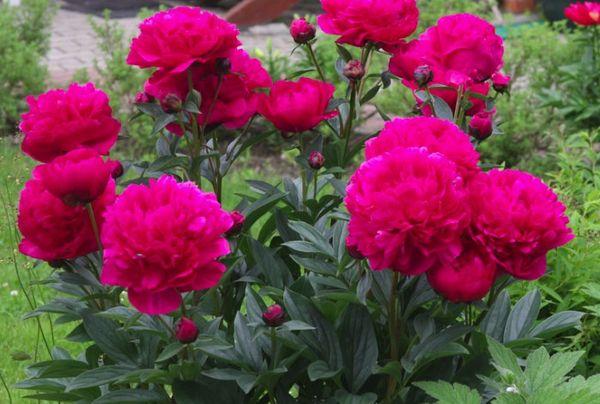
Lactiflora
The bush has flower petals of white or pale pink color, up to 20 centimeters. Its leaves are dark green, double pinnate. The variety is used in traditional oriental medicine.
Bernhard
The culture has pearl pink, lilac inflorescences and a strong aroma. The variety is unpretentious and can withstand low temperatures.
Charm
A voluminous flowering bush grows up to 1 meter. Differs in a variety of semi-double or plain colors:
- cream;
- white;
- red;
- pink.
Looks beautiful in a group composition and as an independent plant.
Sword Dance
The variety has simple, bright red flowers, with a pronounced bunch of stamens and pistils. The bush needs protection from strong winds and sunlight.
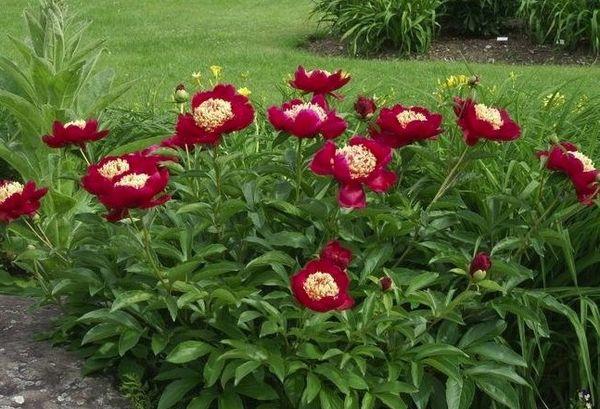
Nancy Nora
The culture is distinguished by delicate, pale pink, double inflorescences, light aroma, lush dark green foliage. The variety needs nutritious non-acidic soils.
Yellow
The culture has stable peduncles on which yellow flowers are located with a diameter of up to 19 centimeters. Differs in strong winter hardiness.
Wy Ti Turner
Dark crimson double flowers will not leave anyone indifferent. High bush with good habit.
Sarah Bernhardt
The variety has semi-double dense flowers. Long stems adorn the multifaceted and semi-double caps of red and white inflorescences.
Ed
The herbaceous plant has a height of 1-1.20 meters. Terry flowers of dark pink color, with a lilac tint, have a diameter of up to 15 centimeters. In Central Russia, the culture of shelter does not require.
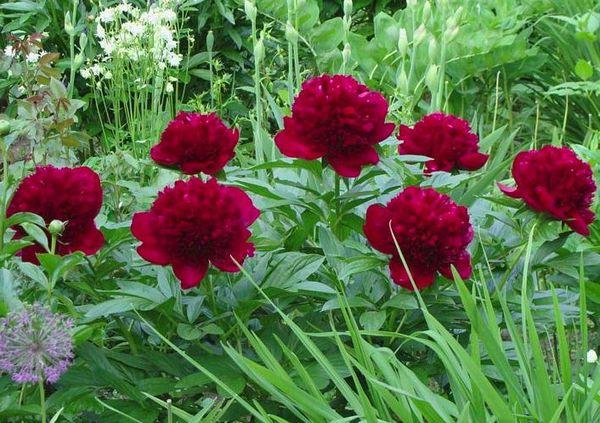
Coral Beach
Semi-double culture has coral pink inflorescences. More than three buds are kept on the stem.
Coral charm
The herbaceous interspecific hybrid changes color during flowering from pink-orange to baked milk. The bush has narrowed leaves, tall stems and semi-double flowers.
Sorbet
The culture has dense semi-double flowers. The shade changes from pale pink to creamy white in alternating layers. Peduncles are stable and do not require support.
Coral Sunset
The large bright petals of the variety have a pale salmon color with a bright red tint. The bush is abundantly covered with lush green foliage and has good frost resistance.
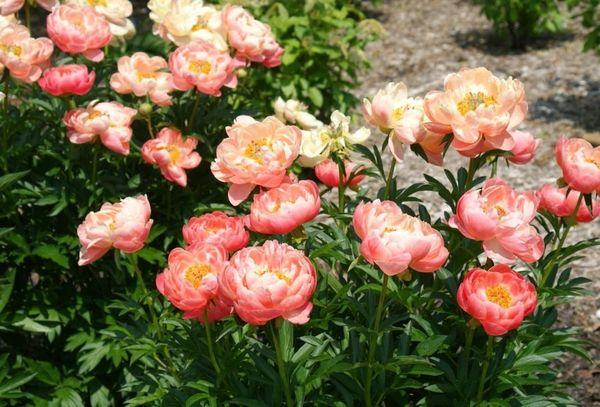
Monsieur Jules Elie
The representative needs a sunny place and loose nutritious soil. The inflorescence has a light pink, lilac shade with silvery tips on the petals.
Inspector Laverne
The culture loves moisture and fertile soil, grows in the shade and in sunny places. The plant has erect, sometimes slightly branched stems, with crimson flowers and a delicate aroma.
Landing
Proper planting will ensure long flowering shrubs.
Seat selection
The plot is selected bright and sunny. In the shade, the culture can be planted, but there it blooms little or does not bloom at all.
Ground requirements
The plant is not demanding on the soil. Loamy soil is preferred. It is not recommended to plant a crop in swampy, acidic areas.

Timing
It is better to start planting a crop in late August and until mid-September. The period is considered favorable, since renewal buds are already being laid in the roots.
Landing scheme
The planting hole is dug 40-50 centimeters deep. Then a nutrient layer is laid with fertilizers from rotted weeds. The root is buried to the renewal buds 4-5 centimeters from ground level.
Growing from seeds
The plant can be propagated by seed.
How to prepare seeds
Seeds are harvested until mid-September. The selected material is planted in the ground to a depth of 5-7 centimeters.
Important: if the seeds are placed in the ground at the beginning of autumn, then the stratification will pass completely.
If the seeds are planned to be planted in the spring, then they are germinated within two months. Then stratification is carried out on the lower shelf of the refrigerator for another 3 months.
Soil preparation
Peat and clay are added to improve the soil. This will saturate the soil with nutrients.
How to plant
To plant a plant, the pit is filled with a nutrient mixture of ash, peat, compost.

The density and depth of planting depends on the variety.
Spraying
When the first signs of the disease appear, it is necessary to spray with fungicides immediately after flowering. It is recommended to apply the solution to the bush and soil. Then spraying continues once every 10-12 days.
Transfer to separate flowerpots
In the fall, the seedling is placed in a pot with a volume of 5 liters and a height of 50 centimeters. It is kept cool until spring.In the spring, the pot is rearranged on the windowsill, where it remains until the fall. In the fall, the plant is transplanted into open ground.
Temperature and light conditions
It takes 10 hours of daylight for normal flowering. The optimum temperature range is from 20 to 22 degrees Celsius.
Landing in open ground
In the spring, the crop is planted after the snow melts. The plant has not yet woken up, and the buds have not yet begun to form. The soil for planting is prepared in advance. In autumn, planting is carried out in early September.
Care
The plant has its own subtleties of care.
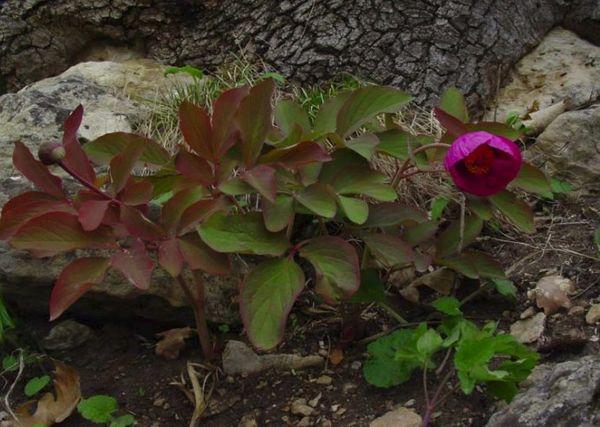
Watering
Abundant watering is important for the culture, especially during the flowering period. But excessive excess moisture leads to rot. The bush is watered once every 10 days.
Loosening and weeding
The plant needs loose soil and timely weeding. Such measures will protect him from infection. Loosening is carried out with a depth of 5 centimeters.
Mulching
To protect bushes from the sun, drought can mulch from humus, compost, bark. Mulching will keep the soil cover cool and prevent soil erosion.
Top dressing
The plant needs organic and mineral fertilizers. The culture is fed in early spring, when the buds are formed, and after flowering after 2 weeks.
Important: feeding is done on wet soil.
Pruning
In the middle of summer, cut off the entire faded head and part of the stem to the first leaf. Before wintering, the plant is cut to the very root.
Reproduction
The culture is propagated by dividing and seeds.
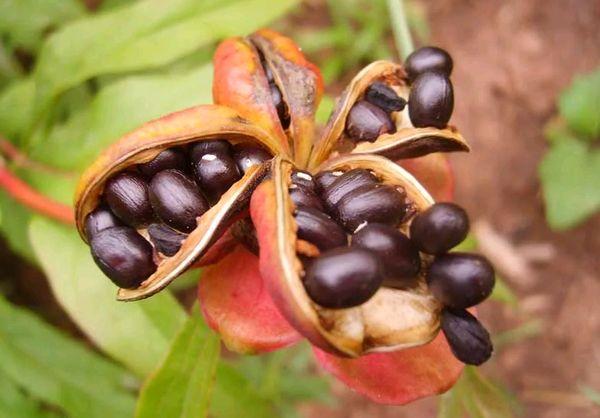
Dividing the bush
From August to September, the plant is dug up and divided. The seedling should retain 3 developed buds and 2 adventitious roots.
Collection and storage of seeds
Light seeds are collected from the seed pod. The collected material dries quickly during storage, therefore it is immediately sown in the ground or pots.
Diseases and pests
The plant can be infected with diseases and pests.
Gray rot
The entire bush is affected by a white bloom. Treatment takes place by cutting off the affected branches and spraying with a 0.6% Tiram suspension.
Powdery mildew
The disease spreads to adult bushes. Differs in a whitish bloom on the surface of the leaves. It is cured by spraying with a solution of soda ash and laundry soap.
Ants
Insects are attracted by the sweet smell of the plant. A solution of drugs with nicotinoids and pyrethroids helps to get rid of them.
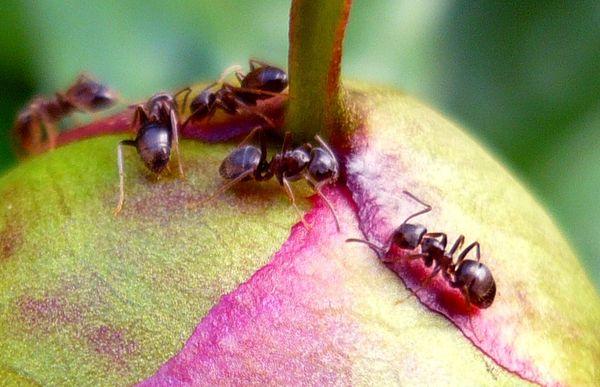
Bronzovka
The beetle eats the petals, foliage and stems of the plant. You can destroy the pest with insecticides or a solution from the tops of tomatoes.
Aphid
Small green insects drink juices from the plant. If there are many of them, the bush dies. You can save the culture with a strong pressure of water from a hose or treatment with Fitoverm, Aktellik.
Use in landscape design
The bushes are beautiful due to their inflorescences, therefore it is recommended to plant them in prominent places. The best backdrop for them is a clean grassy lawn.
They plant a culture among conifers, primroses, hosts. Plants are suitable for decorating mixborders.
Healing properties
For the treatment of some diseases, the roots and petals of the culture are used. To do this, the rhizome is dug up in the fall, and the petals are collected during flowering. Tinctures from the plant have anti-inflammatory, tonic and decongestant functions.
Plants have luxurious inflorescences that can decorate any territory. With proper care, the bushes delight for several years. The variety of varieties allows you to choose the acceptable species for your region.
